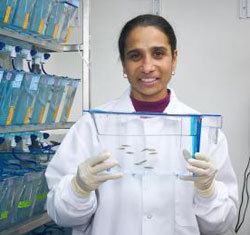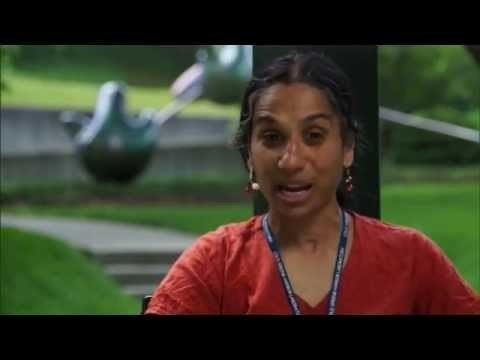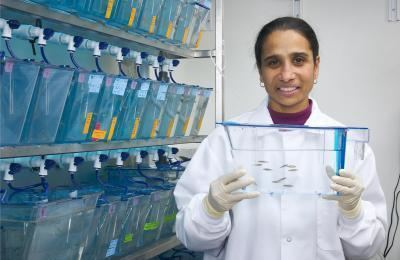Siblings Venkatraman Ramakrishnan | Nephew Raman Ramakrishnan | |
 | ||
Alma mater Baroda Medical College Stony Brook UniversityTufts University | ||
2013 cshl symposium interview dr lalita ramakrishnan
Lalita Ramakrishnan (b. 1959) is an American microbiologist who is known for her contributions to the understanding of the pathogenesis of tuberculosis. She currently serves as a professor of immunology and infectious diseases at University of Cambridge and is a practicing physician. She developed Mycobacterium marinum as a model for tuberculosis working with Stanley Falkow. She has multiple publications in journals such as Science and Cell.
Contents

Early life and education

Ramakrishnan was born in 1959 in Baroda and grew up there. She has an older brother, Venkatraman, who won the Nobel Prize in chemistry in 2009. When Ramakrishnan was a child, her mother had three bouts of spinal tuberculosis.

As a high school student, Ramakrishnan excelled at math and physics. Ramakrishnan began attending medical school at age 17, which is "not atypical in India, where specialized training begins shortly after high school." She did not enjoy medical school, where she "felt suffocated by what she described as a rote, repetitive atmosphere." Additionally, she was "saddened to witness so much suffering and poverty mixed with social problems that were beyond her reach." In 1983, she graduated with a Bachelor of Medicine degree in Vadodara, India from Baroda Medical College.

While completing her residency, Ramakrishnan decided to apply to graduate schools in the United States. She attended a molecular biology program at Stony Brook, where she "struggled to keep up," finding that her medical school training had not prepared her for the advanced courses. However, with support from her classmates, she eventually earned an A in physical chemistry.

After taking an elective course in advanced immunology, Ramakrishnan decided to study immunology. In 1990, she graduated from Tufts University with a Ph.D. in Immunology. She then became the first foreign graduate of the medical residency program at Tufts-New England Medical Center. Ramakrishnan completed postdoctoral work in Stanley Falkow's lab at Stanford University, where she developed Mycobacterium marinum as a model for TB.
Career
In 2001, Ramakrishnan joined the faculty of the University of Washington. There, her laboratory developed the zebrafish model of TB. The model "enabled a detailed dissection of granuloma formation." In 2010, Ramakrishnan was the senior author of a study which was published as the cover story of Cell. Her team had identified a gene, lta4h, which plays a role in susceptibility and resistance to tuberculosis.
In 2014, Ramakrishnan joined the faculty of the University of Cambridge as a professor of immunology and infectious diseases and is a practicing physician.
Ramakrishnan received the Burroughs Wellcome Fund Investigator in the Pathogenesis of Infectious Disease Award. She was named to the U.S. National Academy of Sciences on April 28, 2015. She was awarded a Howard Hughes Medical Institute postdoctoral fellowship to study tuberculosis.
